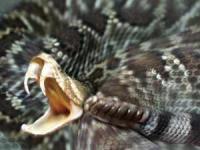New UN Initiative Aims to Boost Life-Saving Treatment for Snake Bites
New UN Initiative Aims to Boost Life-Saving Treatment for Snake Bites

Since Adam and Eve, snakes have long been portrayed as evil creatures to be feared. Aboriginal groups in Australia hold the snake in high esteem, and it is a symbol of fertility. Native Americans in North America felt that snakes symbolized life cycles and truth.
The United Nations health agency has published new guidelines on treatment for venomous snake bites, which kill at least 100,000 people a year. There is a current critical need for appropriate, safe, effective and more obtainable antivenoms. Ir is estimated that 5 million people are bitten each year, mostly women, children and farmers in poor rural areas where health systems and medical resources are lacking and not well equipped , according to the World Health Organization (WHO). In the developed countries, victims are much more likely to survive the experience with greater access to treatment.
Although most snake species are non-venomous and typically kill their prey with constriction rather than venom, venomous snakes are found on every continent except Antarctica. Snakes often bite their prey during the hunt, but they also bite while defending against predators. Since the physical appearance of snakes may differ, there is often no way to easily and quickly identify a species and medical attention is always needed immediately.
What happens next depends on many factors, including the species of snake, the area of the body bitten, the amount of venom injected, and the health conditions of the victim. The bites by venomous snakes can cause paralysis that may prevent breathing, bleeding disorders that can lead to fatal haemorrhage, irreversible kidney failure and severe tissue damage that can cause permanent disability and may result in amputation.
Until the advent of antivenom, bites from some kinds of snake were almost universally fatal. Antivenom is still the the only effective treatment for a bite from a venomous snake. The first antivenom was developed in 1895 by French physician Albert Calmette for the treatment of Indian cobra bites. Antivenom is made by injecting a small amount of venom into an animal (usually a horse or sheep) to initiate an immune system response. The resulting antibodies are then harvested from the animal's blood. Most modern antivenoms are effective against the venom of numerous snake species.
Pharmaceutical companies which produce antivenom target their products against the species native to a particular area. Although some people may develop serious adverse reactions to antivenom, such as anaphylaxis, in emergency situations this is usually treatable and the benefit outweighs the potential consequences of not using antivenom.
Many countries have no access to the antivenoms they need. Others use antivenoms that have never been tested against their target snake venoms. So often when people get bitten, they can't get the treatment they need. This accounts for the discrepancy in mortality rates where in deeloped countries survival rates are high.
WHO stressed that effective and safe antivenoms requires global collaboration, and urged regulators, producers, researchers, clinicians, national and regional health authorities, international organizations and community groups to work together to improve the availability of reliable data on snake bites, the regulatory control of antivenoms and their distribution policies.
Health officials stressed the new guidelines will help determine what antivenoms are needed and in drafting relevant national public health policies. It will further assist clinicians and health care professionals in treating snake bites, and increase awareness among the general population about venomous snakes living in their area.
Lisa KARPOVA
PRAVDA.Ru
Subscribe to Pravda.Ru Telegram channel, Facebook, RSS!




